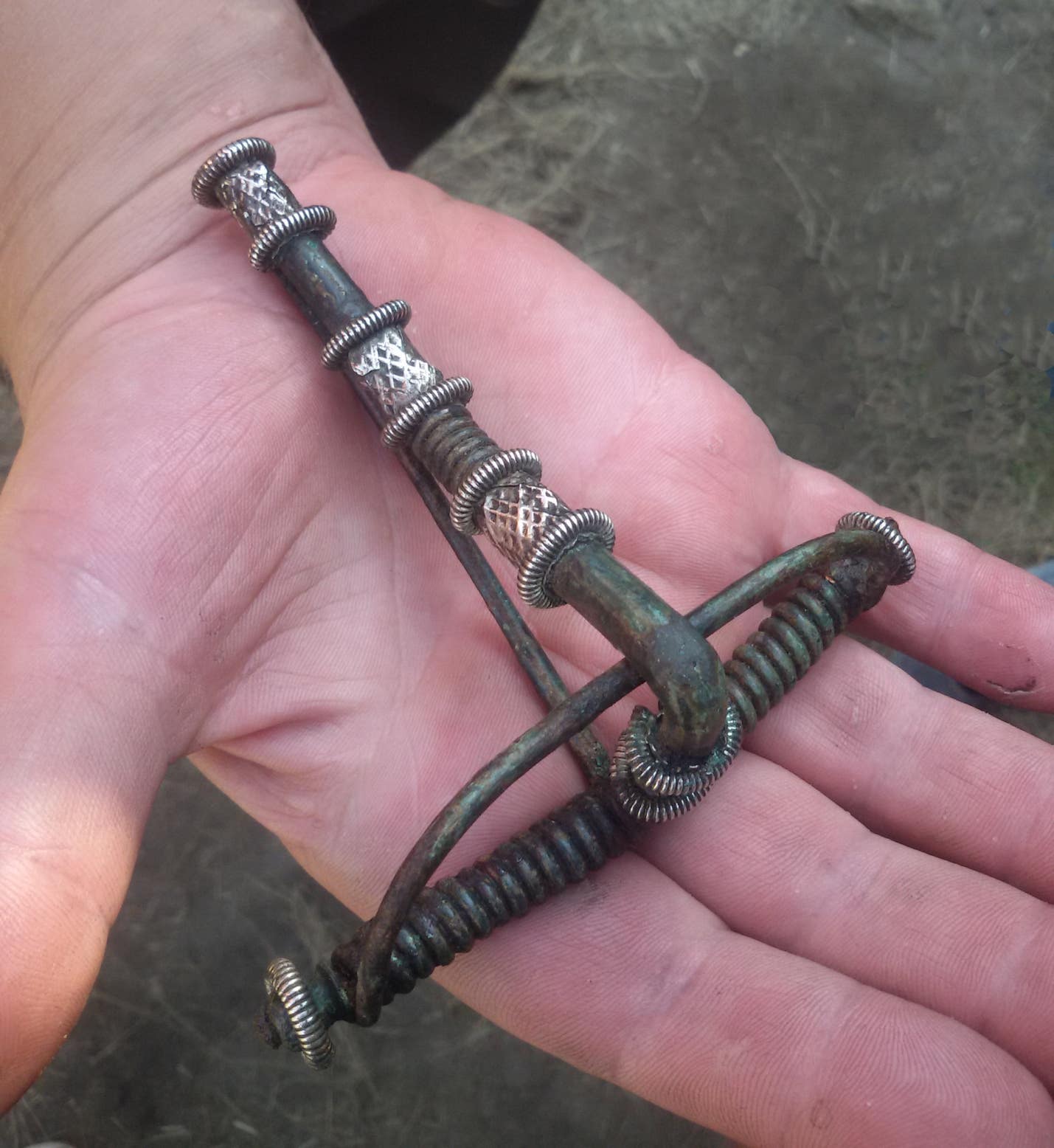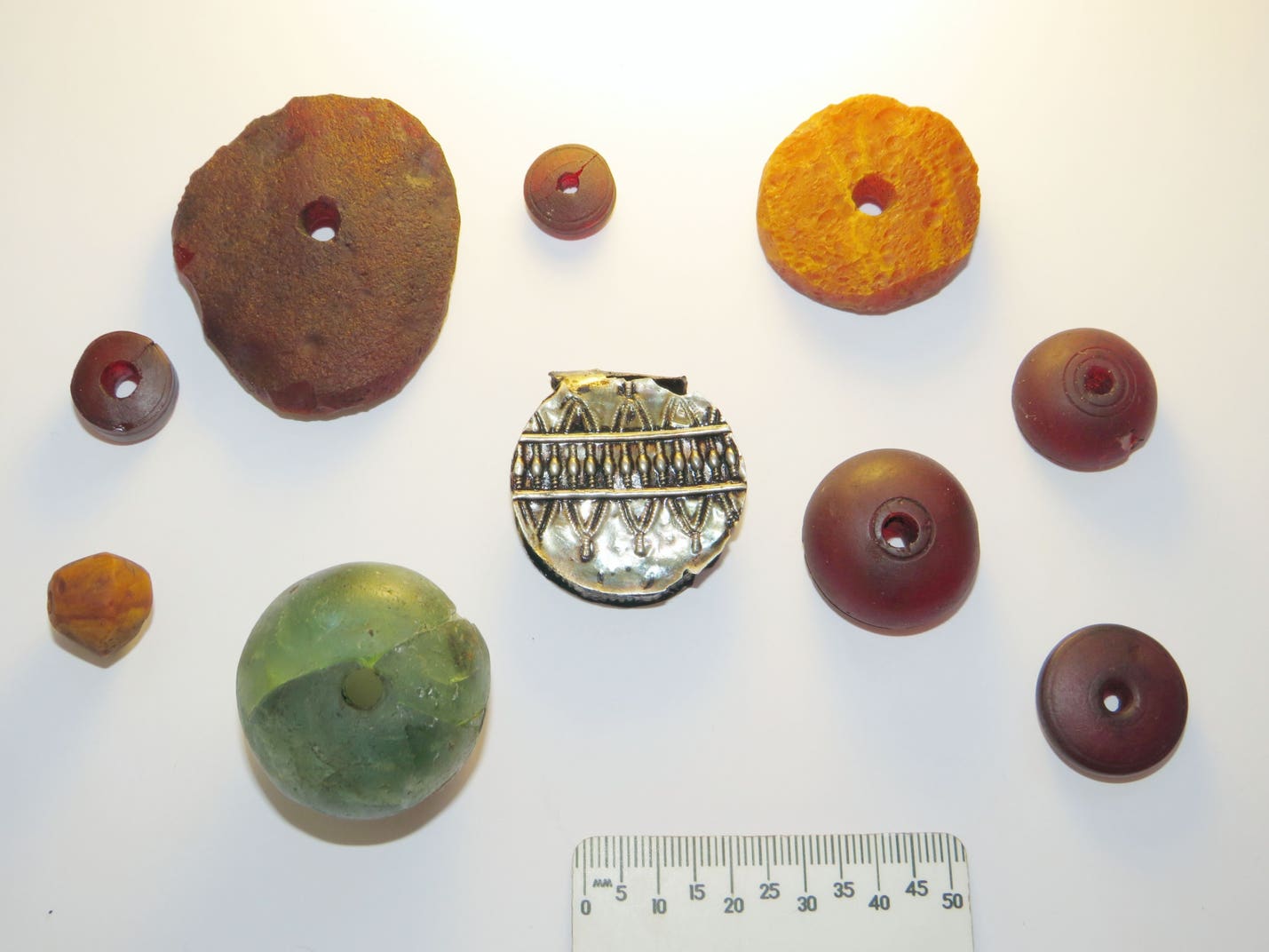

"Amber elites" in ancient Kaliningrad change the view of historians
Categories: Nálezy nejenom s detektorem kovů ve východní Evropě
Excavations of a necropolis on the Sambian Peninsula in Russia have revealed rich graves of high-ranking elites. In addition to weapons, jewellery and personal effects, items such as a Roman board game were found. The site has emerged as an important trading centre that benefited from its interconnectedness with the whole of Europe at the time.
The first excavations of burials in this part of the peninsula began in the second half of the 19th century. At that time, archaeologists dated the necropolis to the 3rd to 8th centuries AD. Now, more than 150 years later, scientists have returned to the site and, during four years of research, uncovered a large burial area of more than 8,000 square metres. They found common graves, tombs with cremation urns, as well as the graves of warriors with horses and the luxurious tombs of the local elite...
So far, only about half of the area has been explored, with hundreds of graves. The Putilovo-2 cemetery, formerly known as Gauten, has been uncovered thanks to infrastructure development. Excavations here began in 2015 as rescue research at the instigation of the Kaliningrad Amber Museum in cooperation with the Institute of Archaeology of the Russian Academy of Sciences under the direction of Konstantin Skvortsov. Over the past year, the area has been massively uncovered as a result of construction work on the A-217 highway.
The finds at Putilovo-2 date from the fourth to seventh centuries AD, beginning in the late Roman period, continuing through the period of the Migration of Peoples, characterised by the invasions of the Huns, Goths and Alans in particular, and ending with the following period - the so-called 'Putiulivian Period'. the Dark Ages, with waves of cold, famine and epidemics...
While the Roman historian and jurist Tacitus regarded the local inhabitants as uneducated barbarians who did not know the meaning of amber, archaeological data suggest a different story. The people living on the Sambian peninsula exploited amber and traded it extensively in exchange for commodities from Scandinavia and the Baltic territories. The peninsula was literally an "amber" trade crossroads. A route led south along the Vistula River to the Germanic areas, passing through present-day Poland, the Czech Republic and Slovakia to the Roman city of Aquileia. From there, goods were distributed across the Mediterranean to Rome and its provinces.
Excavations in this area over the last 20 years have uncovered dozens of graves of high-ranking individuals, elites laid to rest with 'mixed' imports from Scandinavia, the Baltic countries, Germania and Rome. The finds prove that these elites were already active here in the third century AD, not the fifth as previously thought.
Moreover, in the course of the research, it became clear that the connection with the East Germanic neighbours was much deeper. They literally lived side by side; they understood Germanic culture and its myths well, even adopted them. Marital relationships probably existed between the ruling members of the communities. Objects found at Putilov-2 and other local necropolises show clear signs of GermanicGermanic influence, including artefacts bearing Germanic motifs and traditions with symbols and mythological stories.
Putilovo-2 was extensively looted in the past, especially in the Middle Ages. In the 12th to 15th centuries, local inhabitants used the old graves as "quarries" for stone and metal. The grave urns were placed in pits about 1.5 m deep, usually covered by two large slabs with piles of stones on top. Sometimes the slabs collapsed, which might have led would-be thieves to believe that there was nothing of interest underneath except sand. That's why some graves have been completely preserved.
In addition to the cremation urns, artefacts that were overlooked by the robbers were also preserved. These included pottery, ornaments made of bronze, silver and gold, and a wide variety of brooches, from simple shapes to elaborate designs. There were also coins, necklaces, bracelets, rings, belt buckles, glass and amber beads - some even from distant Roman provinces such as Syria and Egypt. Among weapons, various types of swords, spearheads, axes, daggers and shields predominated. Most have been found in the graves of warriors with horses. Archaeologists have also discovered working tools such as knives, scissors and scythes.
One of the larger pits concealed an urn with various objects, including a vessel that probably contained some sort of liquid. The urn also contained a Scandinavian-type spearhead, a bronze dagger with a handle, a brooch with a fibula, scissors, a gold ring, an iron shield, and a set of about 100 glass game pieces that were originally wrapped in material that had succumbed to the ravages of time. The figures come from the popular Roman board game Ludus Latrunculorum. No other game of this type has ever been found in the area before.
The second part of the game's name is a diminutive of the word 'latro', which is Latin for mercenary or robber. The name of the game translates as "robber game" or "soldier game" and was a two-player strategy board game probably similar to checkers today. Unfortunately, there is not enough evidence for a full reconstruction of the game, which was popular throughout the Roman Empire. It is a strong indicator of the integration of Aesthetic societies with surrounding regions.
Roman Nemec
Sources: haaretz.com, theworldnews.net

Belt details - early 5th century.

Cremation urns in one of the elite graves from the 4th to 5th centuries.

Part of a 6th century horse helmet.

Spider in Baltic amber.

Late 4th century Ludus latrunculorum glass game stones.

Bronze fibula with silver details from the late 4th century.

Vessel in a 6th century horseman's grave.

Necropolis of Putilovo-2.

Burial urn and goods in the grave of a high-ranking individual - Putilovo-2 necropolis.

Roman denarii from the 1st-2nd centuries.

Fibulae from Putilovo-2 cemetery.

Amber and glass beads and a silver pendant from the 4th-6th centuries.

Gold ring from the 4th century chamber grave in Putilovo-2.
The article is included in categories:
- Archive of articles > Archaeology > Finds and rescue research abroad > Nálezy nejenom s detektorem kovů ve východní Evropě
Post
Ta "sponka" je nádherná :)
Spona pěkná, ale mě fascinuje ten pavouček v jantaru. My máme spojeného pavoučka se štěstím. Jestli ho našli v nějakém hrobě, tak velice zajímavé. Možná mu přáli štěstí i na druhé straně. No a jestli byl v hrobě válečníka, tak v dávných dobách byl pavouk symbolem trpělivosti, jelikož dokáže dlouho čekat na svou kořist, ale byl i symbolem krutosti pro svá jedovatá kousnutí. Tak jaké povahy byl asi onen válečník?
https://ibb.co/pyYnPXT
V jantaru jakási kudlanka a stonožka – stáří cca 23 miliónu let – nádhera









